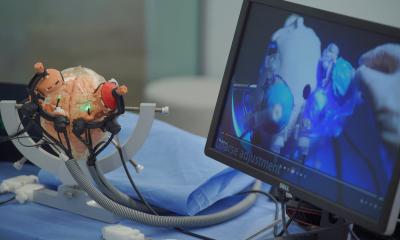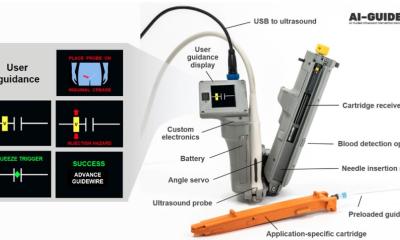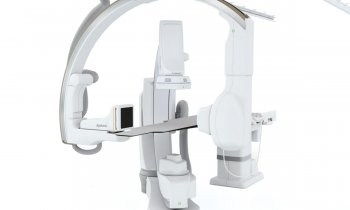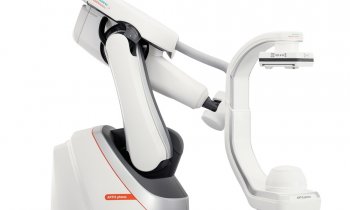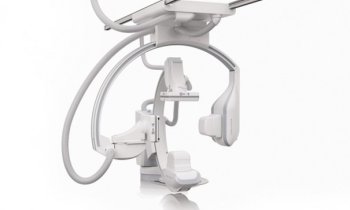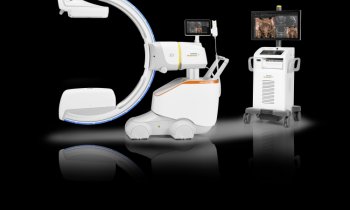Video • Miniaturisation milestone
Sub-millimetre robot for interventional diagnosis and treatment
Researchers from the School of Engineering of the Hong Kong University of Science and Technology (HKUST) have successfully developed the world’s smallest multifunctional biomedical robot, which is 60% smaller than current models.
Capable of imaging, high-precision motion, and multifunctional operations like sampling, drug delivery, and laser ablation, the robot offers competitive imaging performance and a tenfold improvement in obstacle detection, paving the way for robotic applications in narrow and challenging channels of the human body, such as the lung’s end bronchi and the oviducts.
The researchers' findings have been recently published in Nature Communications.
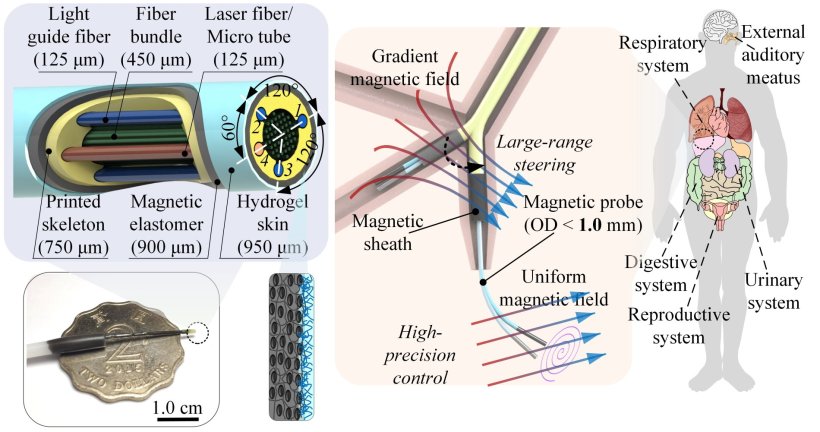
Image source: HKUST; adapted from: Zhang T, Li G, Ren H et al., Nature Communications 2024
With a slim profile of just 0.95 mm—60% smaller than current endoscopic robots—this robot has accomplished an “impossible trinity” by simultaneously integrating all three significant specifications in one robot. It offers competitive imaging performance and extends obstacle detection distance up to ~9.4 mm, a tenfold improvement from theoretical limits. It also achieves remarkable motion precision (less than 30 μm) and substantially widens the imaging region by ~25 times the inherent view.
Our study provides a significant solution for developing a surgical robot aimed at achieving early diagnosis and therapeutic goals in hard-to-reach areas of the body
Yajing Shen
Developed by Prof. Yajing Shen, Associate Professor at the Department of Electronic and Computer Engineering (ECE) and his team, the robot’s tiny size is made possible with four major components. These include an optical fiber array for capturing images inside the body, a custom tool for delivering treatments precisely where needed, a hollow skeleton to hold the fibers and tools in place, and a functionalized skin that enables precise control of the robot's movements. The hollow skeleton is created by a microscale 3D printer, while the functionalized skin is produced through a magnetic spray technique, which helps keep the robot small and allows it to glide easily during surgery. It also features a gel-like outer layer that reduces friction. The team has tested this robot within in vitro bronchial models and ex-vivo porcine lungs, demonstrating smooth navigation in tight spaces while successfully capturing clear images and performing treatments on difficult areas.
Prof. Shen said that this groundbreaking robot holds tremendous potential for clinical applications. “Small-scale continuum robots hold promise for interventional diagnosis and treatment, yet existing models often struggle with compactness, precise navigation, and visualized functional treatment all in one. Our study provides a significant solution for developing a surgical robot aimed at achieving early diagnosis and therapeutic goals in hard-to-reach areas of the body. With ongoing technological advancements, we believe that the fiberscopic robot will make greater contributions to human health in the foreseeable future,” he said.
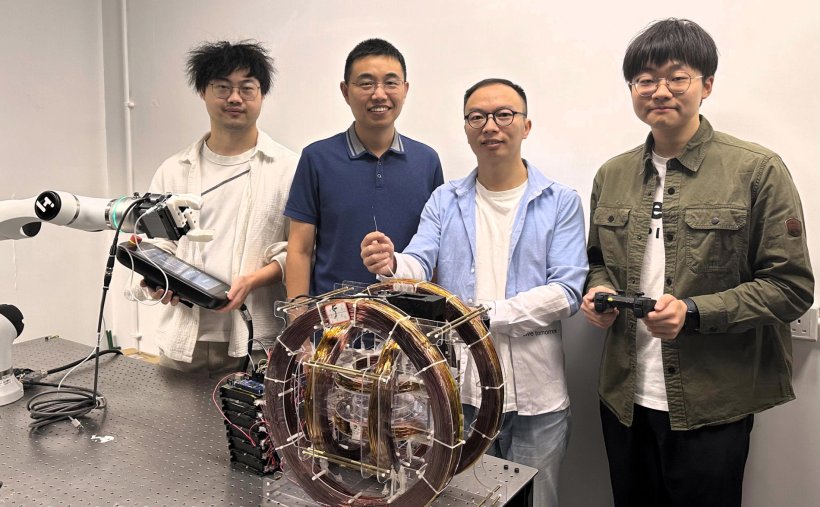
Image source: HKUST
Thanks to their ability to navigate narrow cavities while enabling quick recovery and low infection risk, small continuum robots have been employed in the treatment of several diseases, including heart disease—through the deployment of stents and electrophysiology catheters—as well as the repair of perforations in gastric and duodenal ulcers using single-port laparoscopy, among other applications. Building on this successful invention, the research team plans to further refine the robot’s features to fit them into practical settings.
“We aim to further optimize the design and control of the fiberscopic robot, prioritizing safety and reliability during interventional surgery. We look forward to implementing in vivo trials to demonstrate its performance in clinical scenarios,” said Dr. Tieshan Zhang, a postdoctoral fellow at HKUST. He is one of the two co-first authors of the study, along with Dr. Gen Li. Other co-authors from HKUST include Research Assistant Professor Dr. Xiong Yang and PhD student Haoxiang Zhao, also from the ECE Department.
Source: Hong Kong University of Science and Technology
22.01.2025



